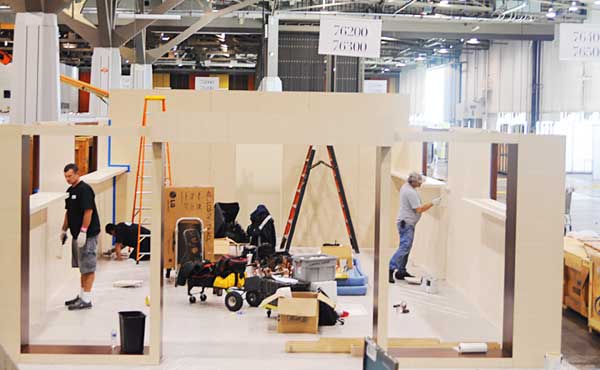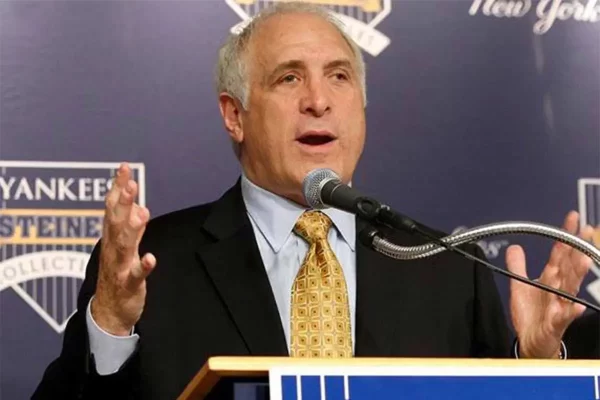For the first-time or seasoned exhibitor, deciphering the labor rules at different convention centers across the U.S. can be confusing to say the least. What may be well within the rules and guidelines at one facility can be out of the question at another.
The installation and dismantle (I&D) tasks that an exhibitor can perform within the labor rules for a show this year can also change dramatically for the same show next year, even if the actual venue doesn’t change. The recent changes at McCormick Place in Chicago are a perfect example. And if the venue does change, exhibitors can pretty much be sure the rules will change, especially if the new location is in another state.
Some states, like Georgia, are right-to-work states. Labor rules generally allow the exhibitor to take a more active approach in the I&D of their display at convention centers in these states. However, even right-to-work states can vary in their approach to show labor.

“Simply said, people who may not have a union affiliation are allowed to work on the show floor at many venues in right-to-work states,” said Rick Bellerjeau, general manager of Momentum Management, a national labor-management company. “That being said, this is not true for all right-to-work facilities, even within the same state.”
At the Georgia World Congress Center in Atlanta, exhibitor personnel are allowed to set up their own booth at most shows. But that may not always be the best idea.
“Even though you may find flexibility in a right-to-work state, often the lack of training, experience or knowledge of the process in getting the exhibit up may actually cost you in time and performance,” said Bellerjeau.
In other venues where the labor rules are tighter, exhibitors have been known to overstep the bounds when it comes to the I&D of their exhibits. Quite often exhibitors are unaware of what they can and can’t do or they are simply starting to become concerned that their property isn’t going to be up in time for the show.
“Doing work that you’re not supposed to do in the facility will likely lead to you just being asked to stop,” said Bellerjeau. “These don’t have to be uncomfortable conflicts, but they are always unwanted by organizations installing the show and the exhibit personnel trying to get their booth up.”
When the exhibitor is either unable on not allowed to install their own booth, individual unions have jurisdiction over different areas of the move-in process. This also changes from venue to venue depending on the state. In Las Vegas, Teamsters Local 631 has jurisdiction over the I&D of exhibits, as well as over freight handling. At McCormick Place, Teamsters Local 727 has jurisdiction over freight, but the recent work rule changes have created a unified labor force of Carpenters and Decorators for I&D.
For exhibitors, these rule changes and varied jurisdictions can make managing the installation and dismantling of their exhibit a losing battle.
As a result, these tasks are delegated to either the general services contractor (GSC) or the exhibitor appointed contractor (EAC).
“All parties involved on the labor side of the show start with the same goal: to get the exhibit properties onto the show floor as soon as possible and with the least amount of effort,” said Rick Bellerjeau, who serves on the EAC side of the equation. “This goal is critical to everyone’s mutual success. It really doesn’t matter what union affiliation, role or responsibility an individual has.”
Whether an exhibitor chooses the GSC or an EAC to manage its I&D on the show floor, they both have different pros and cons. Some companies swear by hiring an EAC, while others have never worked with anyone other than the GSC that has been hired by show management.
Either way, a smooth move-in is all about communication and expectation.
“We believe being able to communicate before the show with your labor company is one key to success,” said Bellerjeau. “Making sure they understand clearly what your goals are and that they help you understand any challenges that might arise in meeting those expectations is very important. The deeper the partnership, the more those expectations are likely to be understood and met.”
Whether a tradeshow is in a right-to-work state or a venue with strict labor rules and multiple union jurisdictions, exhibitors have options when it comes to the move-in of their displays. And these options come with trained professionals and an industry built around the success of the show.
“There is a lot of cooperation and coordination necessary to pull off any show,” said Bellerjeau. “Whether it’s the general contractor, electricians, riggers, forklift drivers or exhibitor appointed contractors (EAC’s), the goal always remains the same; to have an outstanding show.”
Exhibitor Tip
This was taken from the Q&A section of the Graph Expo 2012 Exhibitor Service Manual
Q: Will tipping get my truck unloaded sooner?
A: No. Labor has been instructed to unload any exhibitor last who has offered a gratuity. Also, please alert your floor manager of any attempt to solicit gratuities.






























